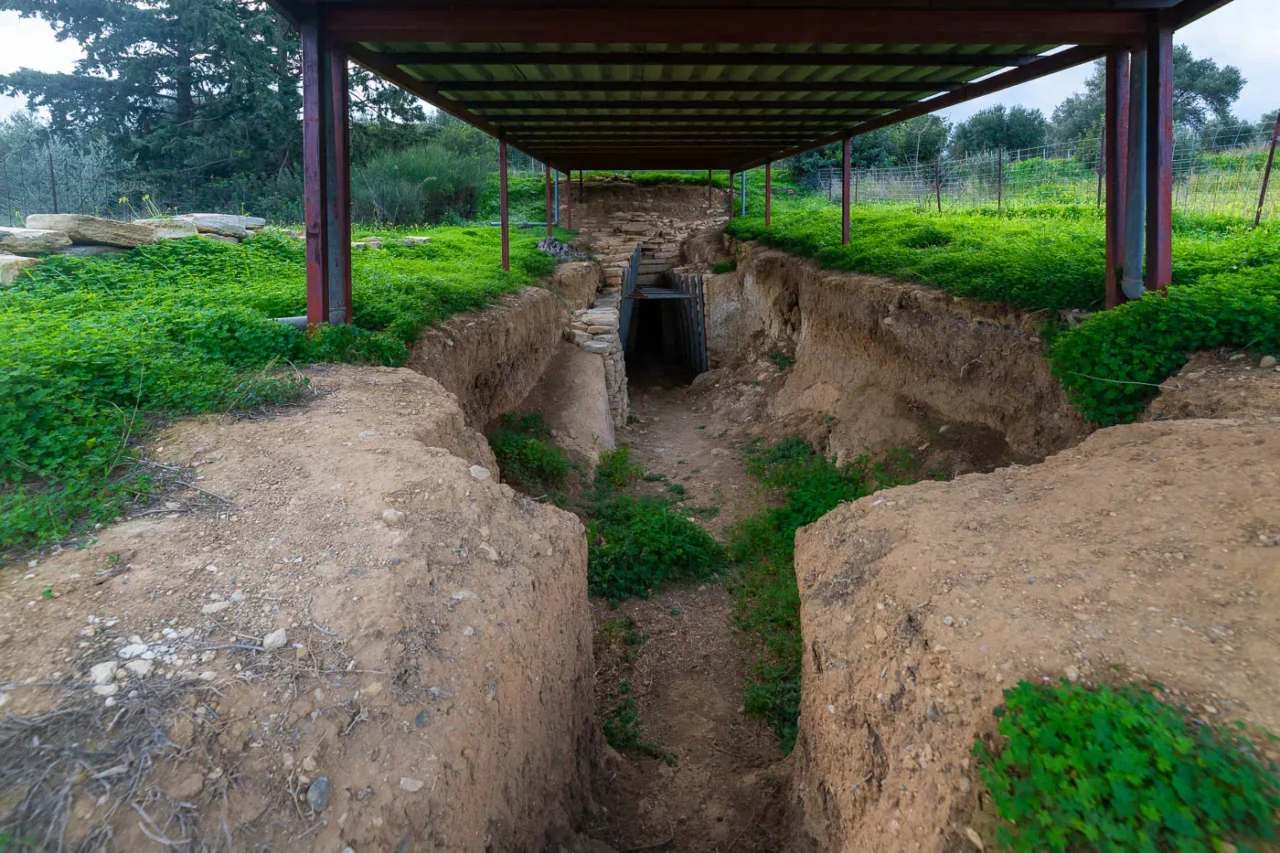
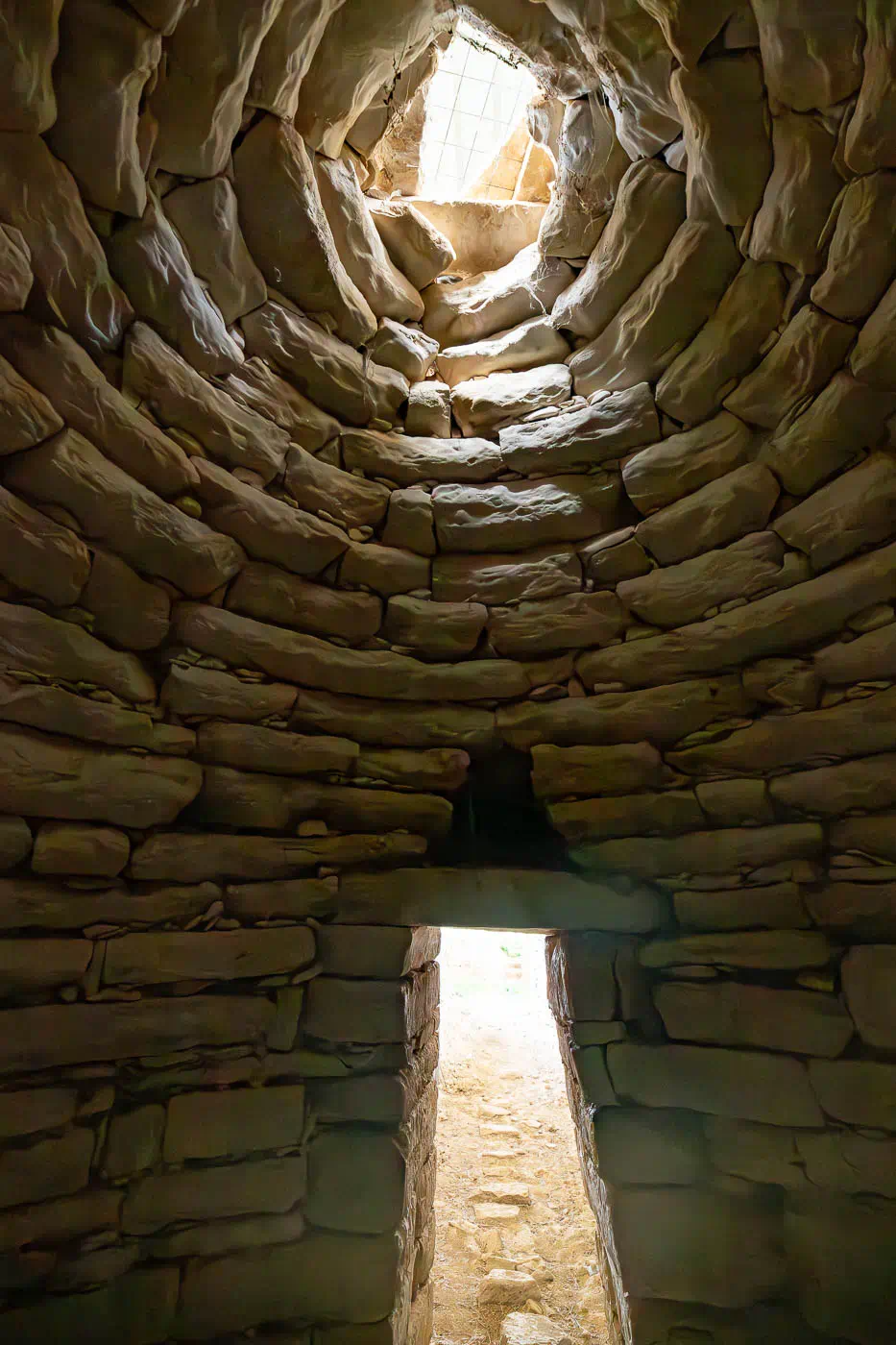
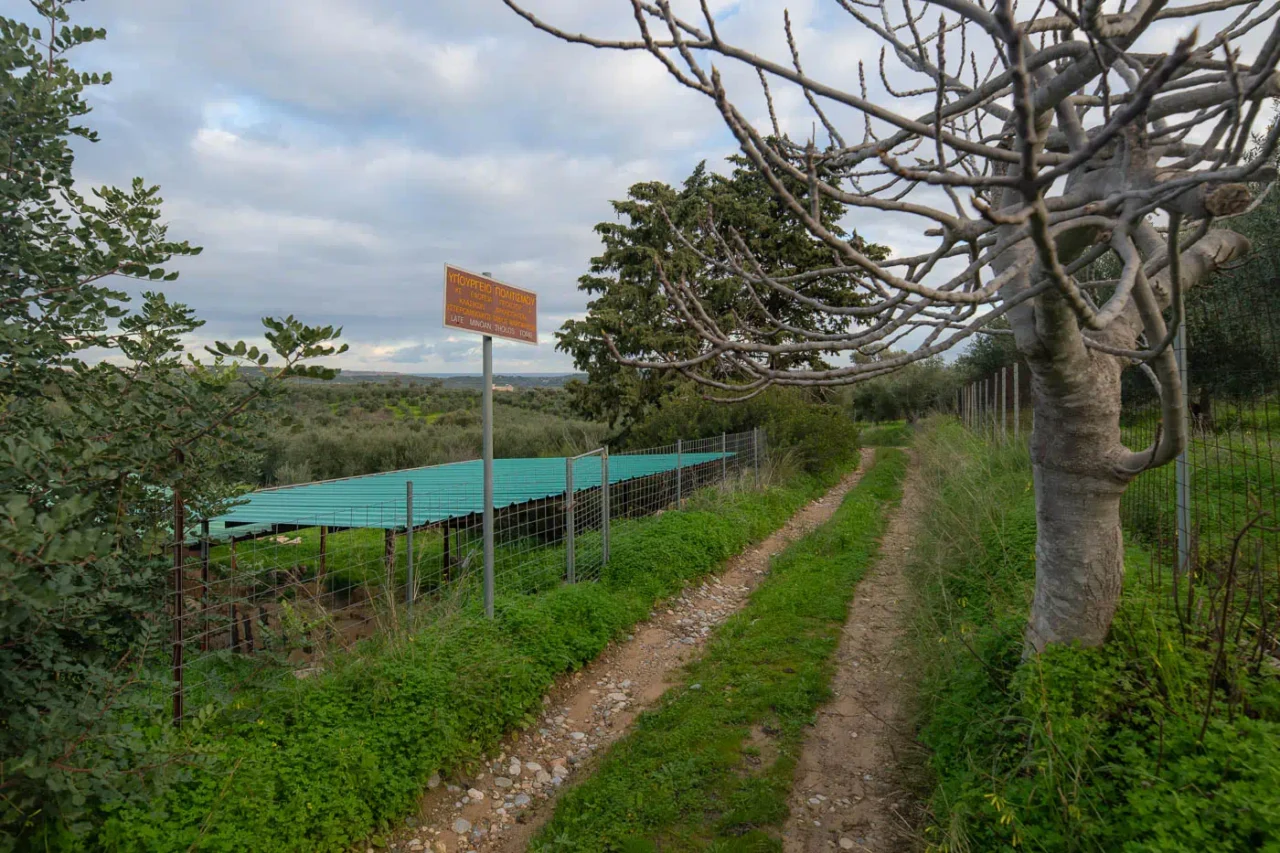
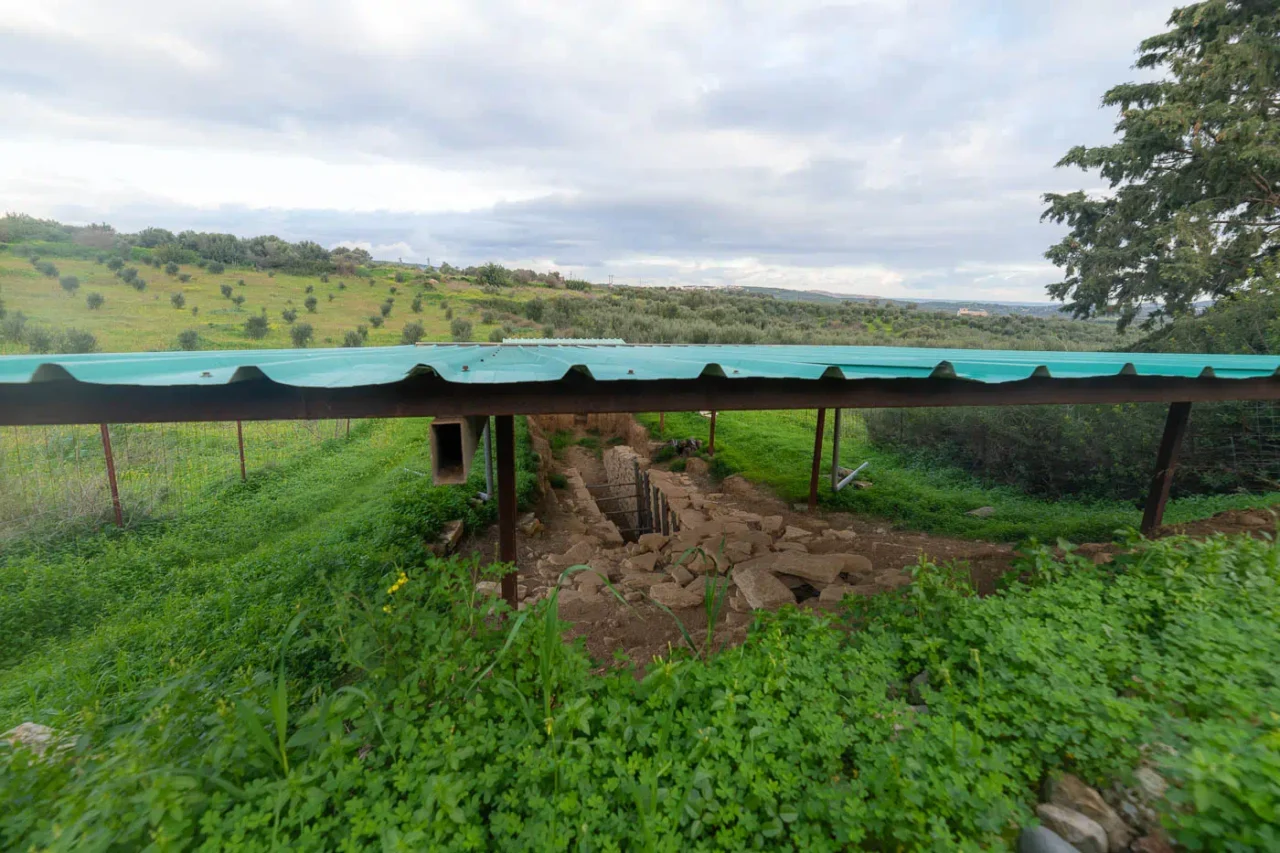
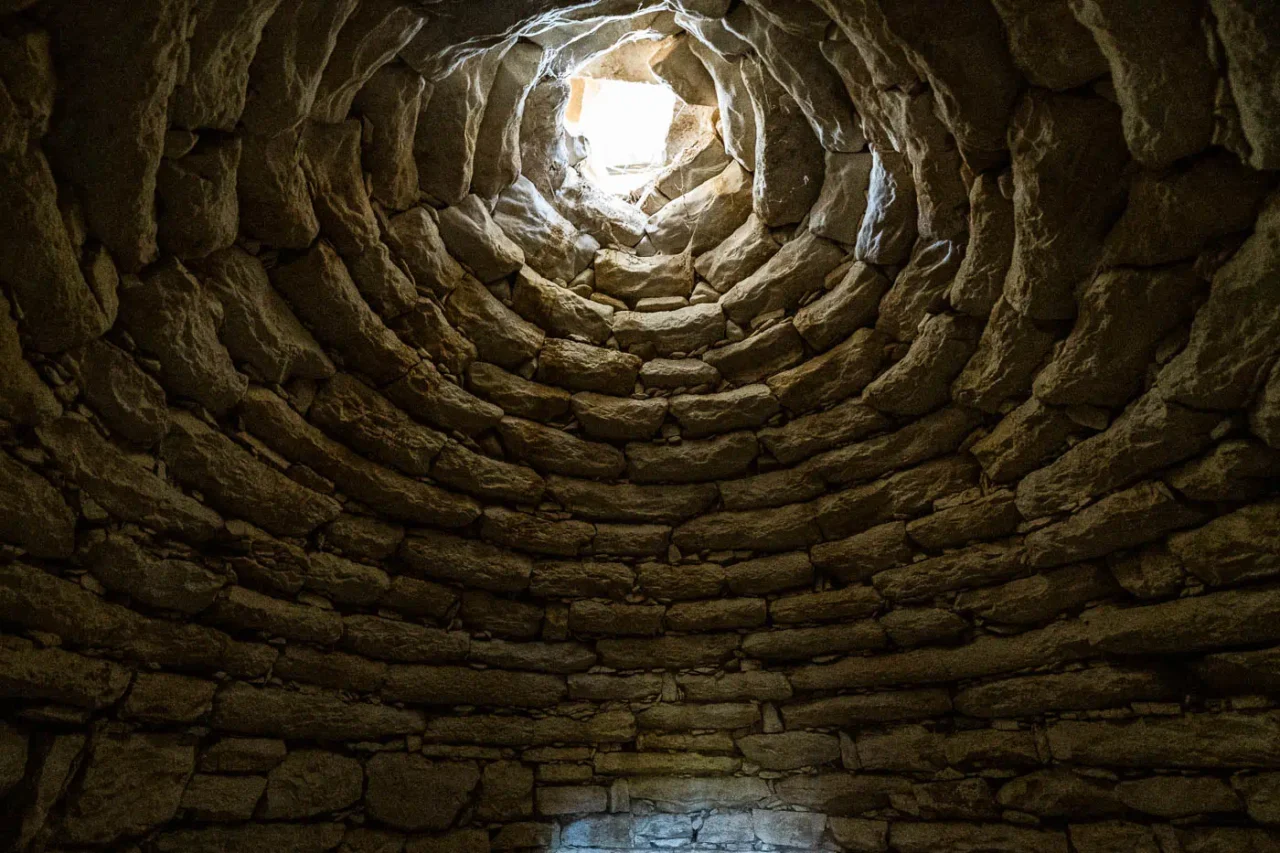
Late Minoan Tholos Tomb at Margarites, Mylopotamos
During the winter of 1996-1997, a significant Late Minoan III period tholos tomb was excavated on the property of M. Papadakis, in the Kalosykias area of the Margarites community in Mylopotamos. The tomb’s existence was initially reported by M. Dandolas, a resident of the community, and the site was inspected by archaeologists Eir. Gavrilaki and E. Tegou. The excavation team was led by architect M. Nikoloudakis, and the plans were drawn up by architect F. Kougle.
The tomb, oriented to the east, is accessed via a long, narrow, downward-sloping dromos (passageway) with converging walls, measuring 13.70 meters in length and 1.90 meters in width. The construction of the side walls is notable, with large slab-like stones lining the first 6 meters from the entrance to the burial chamber. The floor of this section is constructed of small pebbles set in lime mortar. Interestingly, two distinct layers of carefully packed soil with extensive burning on the surface were found above this floor. During the removal of this soil, a significant number of kylikes (drinking cups), fragments of utilitarian and storage vessels, a few pieces of copper, and a remnant of gold leaf were discovered.
The dromos leads to a monumental entrance, measuring 1.94 meters high, 0.86 meters wide, and 1.10 meters deep, with built-in doorjambs and a lintel. The entrance’s barrier was almost entirely destroyed by a previous looting at an unknown time and had collapsed into the tomb’s interior. A small portion of the barrier survived just above the floor, consisting of carefully constructed limestone slabs.
The tholos has a diameter of 4.60 meters and a height of 4.31 meters. It is carved into the soft kouskouras stone and lined with large slab-like stones built in a corbelled manner. The stones’ faces have been meticulously carved to achieve the circular plan of the interior. The tholos remains intact except for some stones removed from the top, which would have formed the tomb’s external, likely visible, dome. A modern or later looting likely occurred through the opening at this point. A pile of slabs from the destroyed barrier and the tholos had collapsed into the chamber, reaching a height of 1.50 meters from the floor. These slabs had broken and scattered any objects left behind or overlooked by the looters.
Burial Practices and Grave Goods
The number of burials will be determined after studying the decomposed bones scattered throughout the chamber, but fragments of at least two skulls are discernible. Many small fragments of clay chest-shaped sarcophagi with lids, likely two in number, were collected from the entire chamber. Their extremely poor state of preservation due to erosion makes restoration nearly impossible, and only a few fragments show traces of plaster and paint. The remains of bronze knives or daggers found in the tomb are in a similar condition. Among the ceramic fragments, kylikes, one-handled cups with stems, a cup with a tubular spout, conical cups, false-necked amphorae, and utilitarian cooking vessels have been identified. The number of small finds is not yet known, as most come from the flotation of the chamber’s soil, which has not yet been completed. These finds include an almond-shaped seal stone, glass paste beads, beads of various shapes (spherical, drop-shaped, square, conical) and materials (gold, faience, rock crystal, amethyst, steatite). Also of interest are plaques made of ivory or hippopotamus tusk, some embossed or engraved, which served as inlays for bronze weapon handles or wooden objects. Unfortunately, none of the samples found so far bear figurative decoration, like those from the Phylaki Apokoronou tomb, but only linear decoration with concentric circles or curved lines.
Archaeological Site: Key Points
- Construction Period: Late Minoan III period (LM IIIA2 and LM IIIB)
- Location: Margarites, Mylopotamos, Crete
- Dimensions: Tholos diameter 4.60 meters, height 4.31 meters; Dromos length 13.70 meters, width 1.90 meters
- Historical Significance: Unique tholos tomb in the Rethymno region, providing insights into Late Minoan burial practices and material culture
- Current Status: Excavated and under study
Google makes it possible. In the village turn left towards the hospital. Parking somewhere about 100 m behind on the sides, small parking bays are available. From the street you can see the green flat roof about 300 m away to the south. That is the goal. You can easily walk the 300 m through the adjacent olive groves.
Google machts möglich. In der Ortschaft nach links Richtung Krankenhaus. Parken irgendwo ca. 100 m dahinter an den Seiten, kleine Parkbuchten sind vorhanden. Von der Straße sieht man schon in ca. 300 m Entfernung südliche Richtung das grüne Flachdach. Das ist das Ziel. Die 300 m kann man durch den angrenzenden Olivenhaine bequem gehen.


















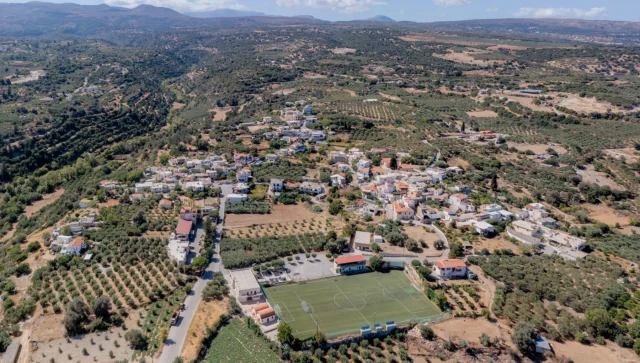

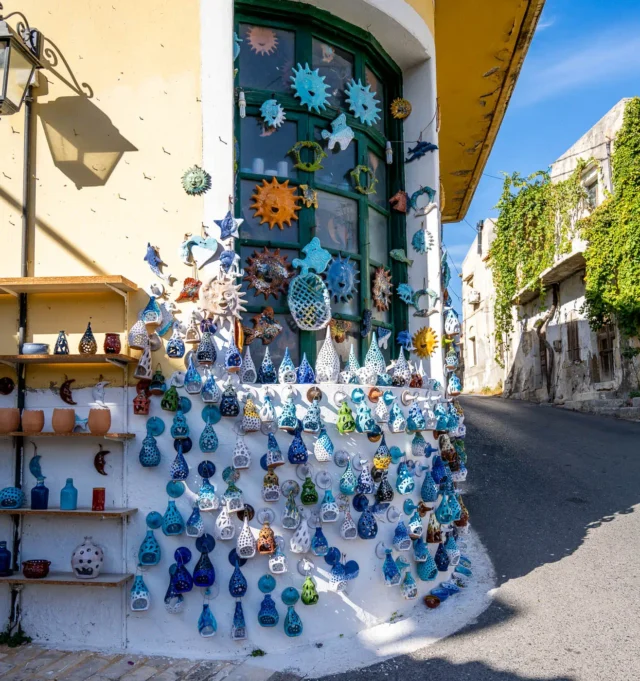
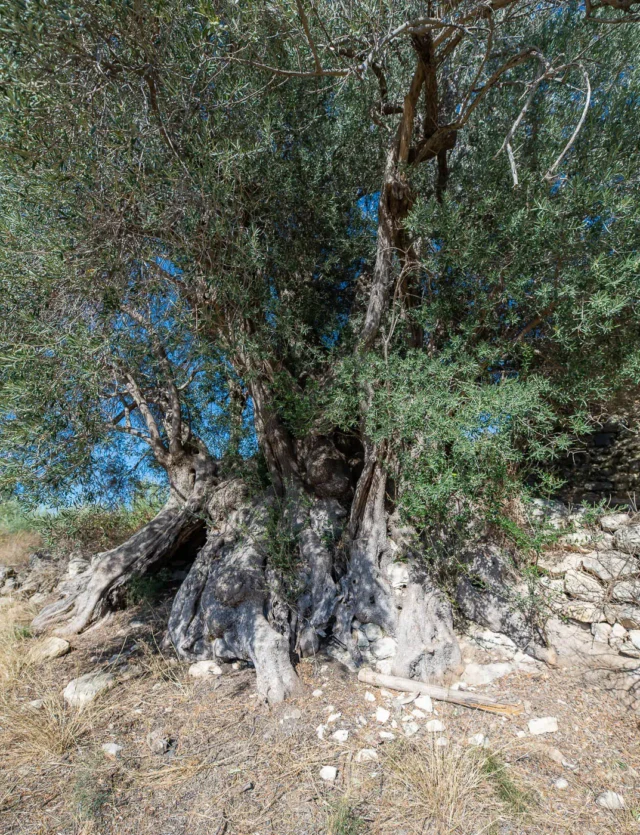


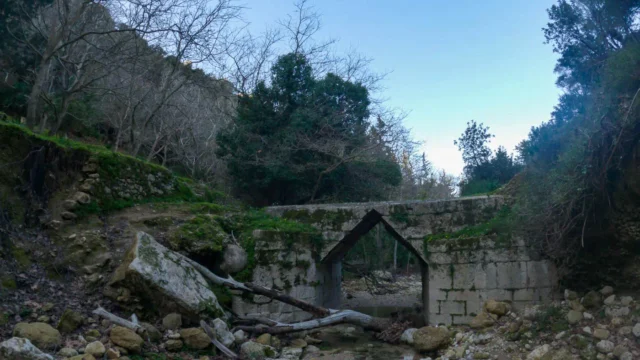
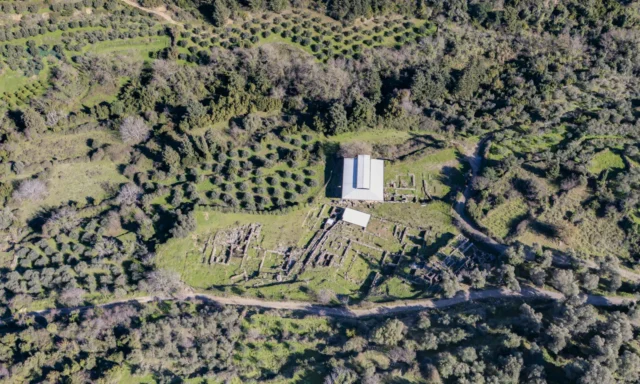
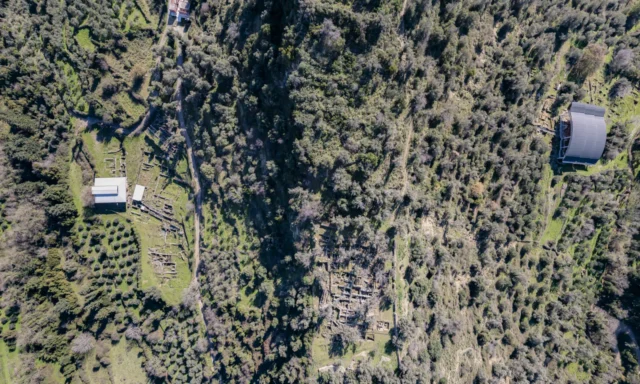

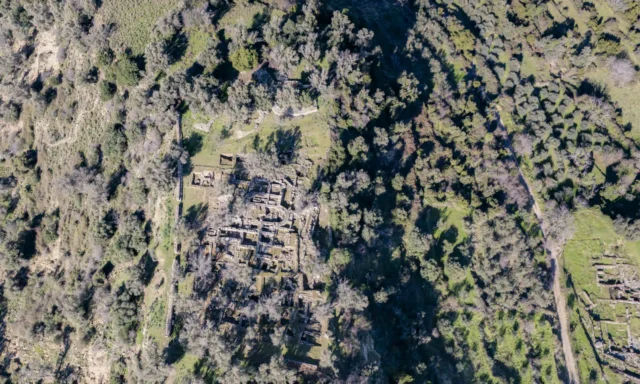
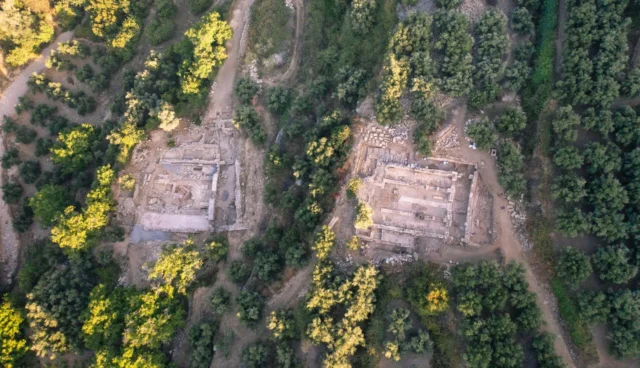
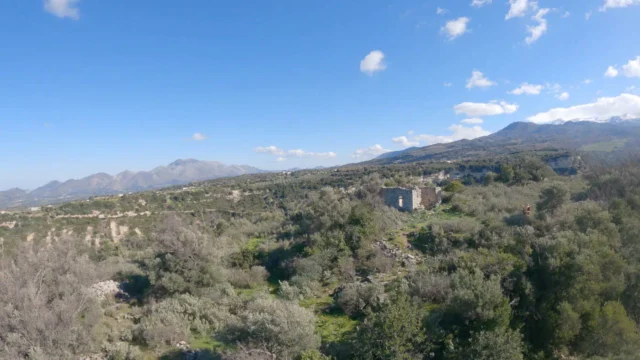
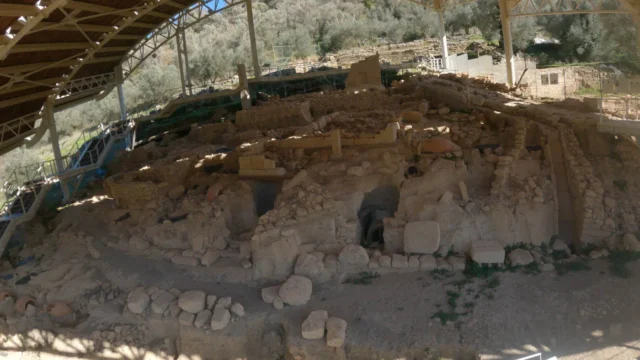
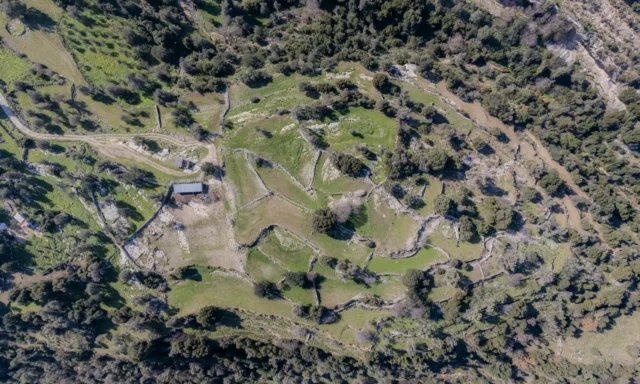

There are no comments yet.